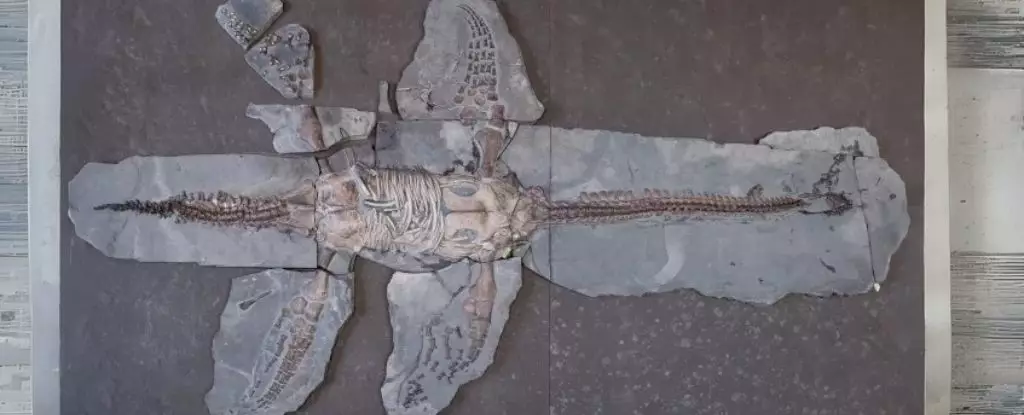During the age of dinosaurs, the oceans were ruled by a diverse range of marine reptiles, among which plesiosaurs stood out due to their unique anatomy and hunting adaptations. Characterized by their long, serpentine necks and four flippers, these creatures emerged as formidable predators in the Jurassic seas. A recent discovery has shed light on their anatomical features, revealing insights into their lifestyle and evolutionary trajectory.
A significant breakthrough occurred when a remarkably well-preserved fossil of a plesiosaur was analyzed by paleontologists at Lund University, led by Miguel Marx. This fossilized specimen, measured at approximately 4.5 meters in length, dates back to 183 million years ago, offering a glimpse into a period when plesiosaurs were exceptionally prevalent. Excavated in 1940 from Holzmaden, Germany, this fossil was safeguarded during World War II but subsequently remained dormant in storage until new analysis techniques enabled researchers to unlock its secrets.
The study utilized advanced microscopy and spectroscopy to reveal details about the plesiosaur’s skin and flippers that had never been documented before. While fossils of plesiosaurs have been collected globally, instances of well-preserved soft tissue are rare, with only eight samples recorded thus far. This research is particularly significant as it offers comparative insights with modern marine species, thereby enhancing our understanding of the paleoecological context in which these creatures thrived.
One of the most fascinating findings from the analysis is the discovery of flipper scales on the plesiosaur’s limbs, which resemble those of contemporary sea turtles. This similarity suggests that these flippers may have played a crucial role in either propulsion through the water or in providing traction while moving across the seafloor. The fact that plesiosaurs retained reptilian scale-like structures, unlike other marine reptiles such as ichthyosaurs—who lost their scales to adapt to a fully aquatic lifestyle—poses interesting questions about evolutionary adaptation and competitive niches.
The research indicates that the skin of the plesiosaur’s tail was smooth, akin to today’s warm-blooded marine animals. Conversely, the foreflipper showed small, irregular triangular structures, hinting at a dual function of mobility and protection. As proposed by Marx and colleagues, the scaled flippers could have provided additional grip on the seafloor, allowing these creatures to forage effectively on benthic organisms, such as snails and crustaceans, evidenced by fossilized gut contents found in other Plesiosaur remains.
These anatomical features illuminate the ecological roles plesiosaurs played in their environments. Their ability to “bottom-walk” across the ocean floor as they grazed on marine invertebrates is notable; it demonstrates a behavioral adaptation that may have contributed to their long-term survival as a dominant pelagic tetrapod clade. The research findings posit that the scales on the trailing edges of the flippers might have conferred selective advantages during their evolution, setting them apart from their contemporaries and enhancing their predation strategies.
The exciting discoveries surrounding plesiosaur fossils challenge long-held assumptions about these marine reptiles’ anatomy and behavior. As scientists like Marx and his team delve deeper into the intricacies of fossil examinations, we begin to understand the complex evolutionary narratives that shaped the astonishing diversity of prehistoric life forms. This research not only enriches our appreciation of these ancient beings but also highlights the importance of paleobiological studies in unraveling the Earth’s biological past, allowing us to draw broader conclusions about adaptation, survival, and ecological dynamics over millions of years. With each fossil unearthed, our understanding of these prehistoric giants evolves, proving that the story of life on Earth is far from complete.


Leave a Reply